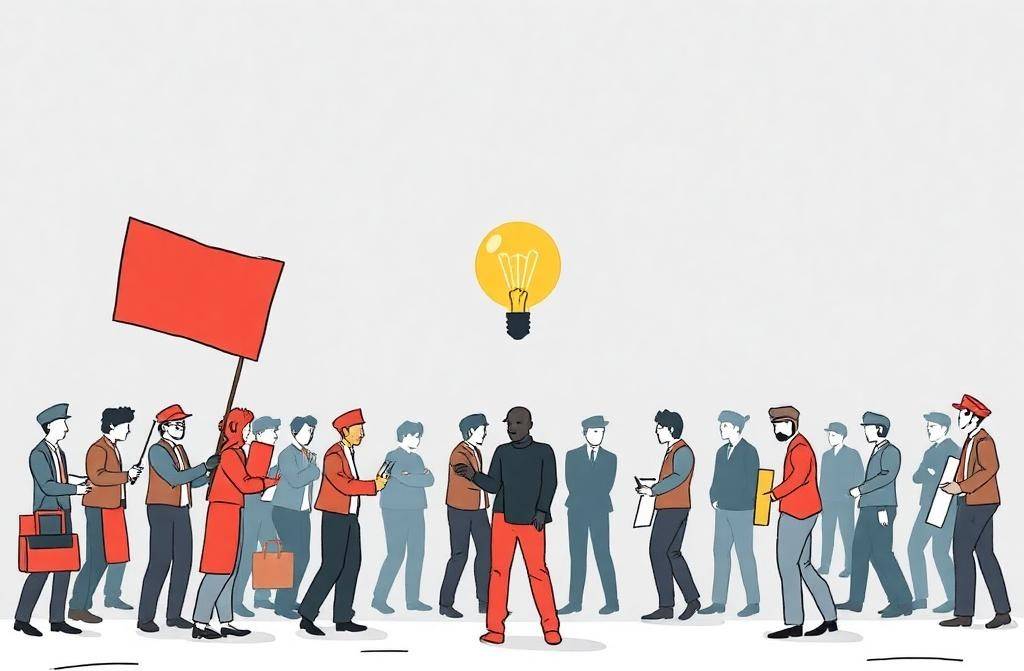Layoffs are a harsh reality in today’s economic landscape, affecting both unionized and non-unionized employees. However, the impact on unionized employees differs significantly due to the protections, agreements, and bargaining power labor unions provide. While unions offer job security and severance benefits, they also face challenges such as seniority-based layoffs and rigid employment structures. This blog explores the positive and negative effects of layoffs on unionized employees, incorporating a technical analysis of labor laws, collective bargaining agreements (CBAs), and economic implications.
Understanding Unionized Employment and Layoffs
Unionized employees work under Collective Bargaining Agreements (CBAs) that define terms for layoffs, severance, and rehiring. Unlike at-will employees, who can be terminated with minimal notice, unionized workers benefit from structured layoff procedures, ensuring fairness and legal compliance.
Key factors influencing layoffs in unionized workplaces:
- Industry-Specific Factors: Economic downturns in manufacturing, public sector jobs, and education often lead to union layoffs.
- Seniority Rules: Most unions implement a last-in, first-out (LIFO) policy, meaning newer employees are laid off first.
- Collective Bargaining Agreements (CBAs): Layoff conditions, severance packages, and recall rights are predetermined.
- Grievance and Arbitration Rights: Employees can challenge wrongful layoffs through arbitration.

If you want to learn about 5starsstocks.com CLICK HERE.
Positive Effects of Layoffs on Unionized Employees
1. Legal Protections and Transparency
Unionized employees enjoy stronger legal safeguards against unjustified terminations. Companies must adhere to CBA terms, reducing arbitrary layoffs. Additionally, advanced layoff notifications allow employees to prepare for job transitions.
2. Severance Packages and Financial Support
Unions negotiate higher severance pay, extended health benefits, and job placement services, which help laid-off workers financially recover faster than non-unionized employees.
3. Recall and Rehiring Priority
Unlike non-unionized workers, those in unions often have guaranteed recall rights. If the employer reopens positions, laid-off employees are given priority rehiring, minimizing long-term unemployment risks.
4. Retraining and Job Transition Assistance
Many unions offer job retraining programs, educational benefits, and career transition support. Workers can upskill during layoffs, improving their employability for future roles.
Negative Effects of Layoffs on Unionized Employees
1. Seniority-Based Layoffs Can Be Unfair
Although LIFO policies protect senior employees, they disadvantage younger workers, regardless of performance or skill level. This can result in talent loss and stagnation in the workforce.
2. Limited Employment Flexibility
Unionized positions have rigid job classifications and wage structures. Laid-off workers may find it challenging to switch roles or re-negotiate employment terms within the same organization.
3. Employer Retaliation and Union Weakening
In some industries, mass layoffs are used as a union-busting tactic. Employers may target union-heavy departments for downsizing, undermining collective bargaining power.
4. Economic and Psychological Impact
Layoffs contribute to stress, financial instability, and mental health issues. Even with severance and rehiring rights, job loss disrupts financial security and career growth.
Technical Analysis: Economic and Legal Implications
1. Impact on Industry and Economy
- Public Sector Layoffs: Government budget cuts affect teachers, police officers, and municipal workers, often leading to union disputes.
- Manufacturing and Blue-Collar Jobs: Economic downturns hit automotive, steel, and construction industries the hardest, impacting unionized workers disproportionately.
- Tech Industry Trends: While unions are rare in tech, increasing labor organization efforts could lead to new legal challenges in layoffs.
2. Legal Framework Governing Union Layoffs
- National Labor Relations Act (NLRA): Protects unionized employees from unfair dismissals.
- Worker Adjustment and Retraining Notification (WARN) Act: Requires large companies to provide 60-day layoff notices.
- State-Specific Union Laws: Regulations vary by state, with some offering enhanced protections for union workers.
Best Practices for Unionized Employees Facing Layoffs
- Review Your CBA: Understand severance terms, recall rights, and grievance procedures.
- Seek Union Representation: Engage with union leaders for legal and financial guidance.
- Apply for Retraining Programs: Leverage union-funded education benefits to stay competitive.
- Monitor Legal Changes: Stay updated on labor laws that impact union job security.
Conclusion
Layoffs affect unionized employees differently than non-unionized workers, offering both protections and challenges. While unions negotiate better severance, legal safeguards, and rehiring opportunities, they also face limitations in employment flexibility and fair layoff distribution. Understanding labor laws, economic trends, and CBA provisions is crucial for navigating layoffs effectively.
For employees, preparing in advance, leveraging union resources, and staying informed on legal rights can mitigate the negative impact of layoffs. As economic shifts continue, unions will play a critical role in shaping fair employment practices and job security measures.
FAQs: Layoffs and Unionized Employees
1. Do unionized employees get laid off less often than non-unionized workers?
Yes, but it depends on the industry and economic conditions. Unionized jobs typically have more protections, but large-scale layoffs can still occur.
2. What legal actions can unionized employees take after a layoff?
Workers can file grievances, seek arbitration, or challenge wrongful dismissals under NLRA and CBA guidelines.
3. Can a company lay off unionized employees without notice?
Under the WARN Act, companies with 100+ employees must provide a 60-day notice before mass layoffs.
4. How do unions help employees after a layoff?
Unions provide severance negotiations, legal support, retraining programs, and rehiring assistance to help workers transition.
5. Can layoffs be used to weaken unions?
Yes, some employers use targeted layoffs in heavily unionized departments to reduce bargaining power and discourage union activity.
Final Thoughts
The evolving job market presents both challenges and opportunities for unionized employees. By understanding their rights, leveraging union resources, and staying proactive, workers can navigate layoffs more effectively. As labor laws and economic conditions shift, the role of unions in securing job stability and fair treatment will remain more important than ever.





